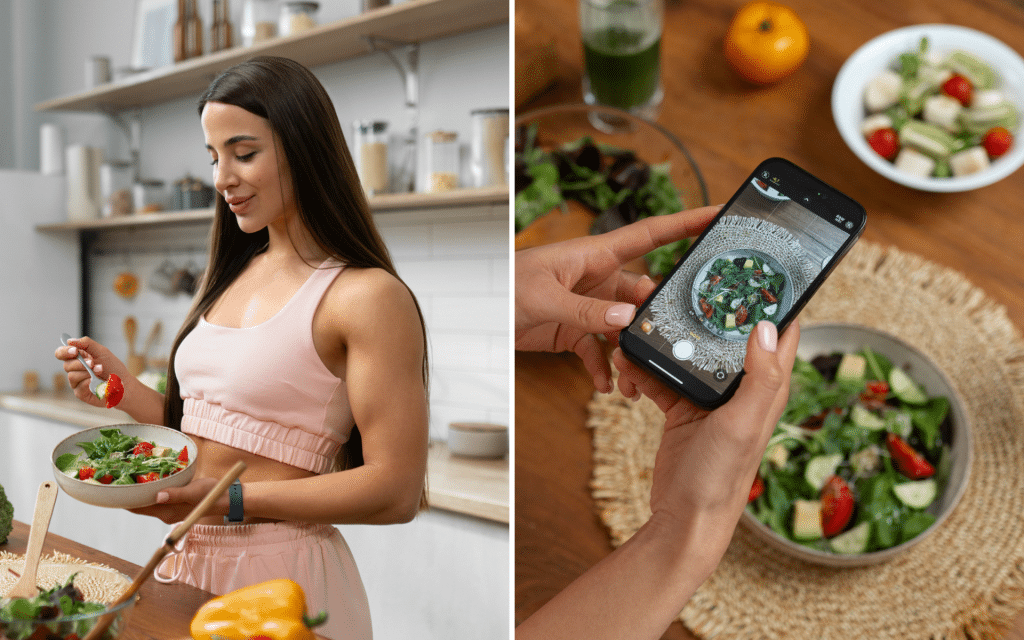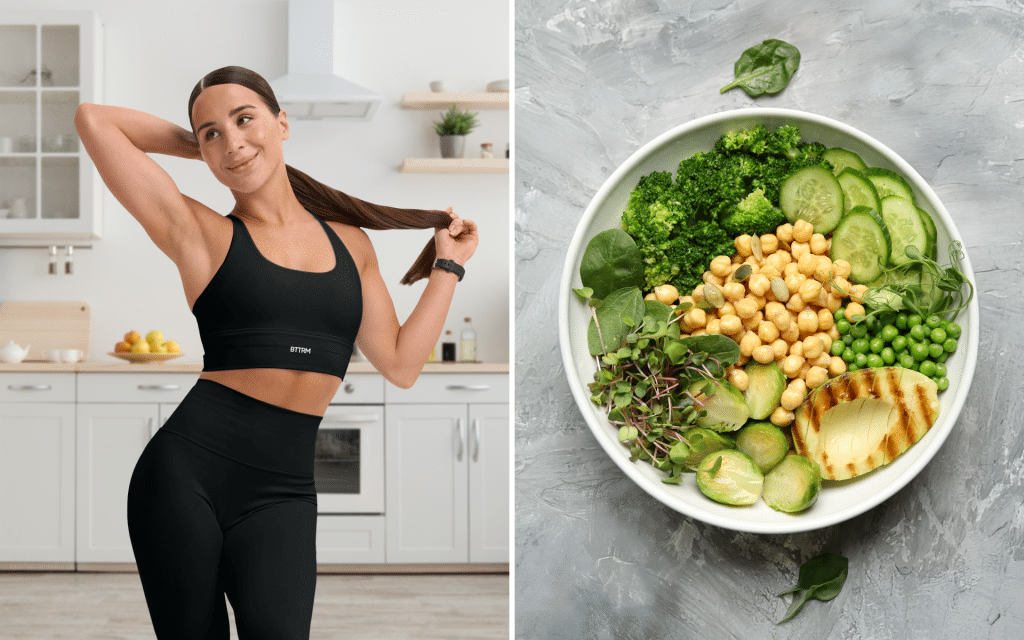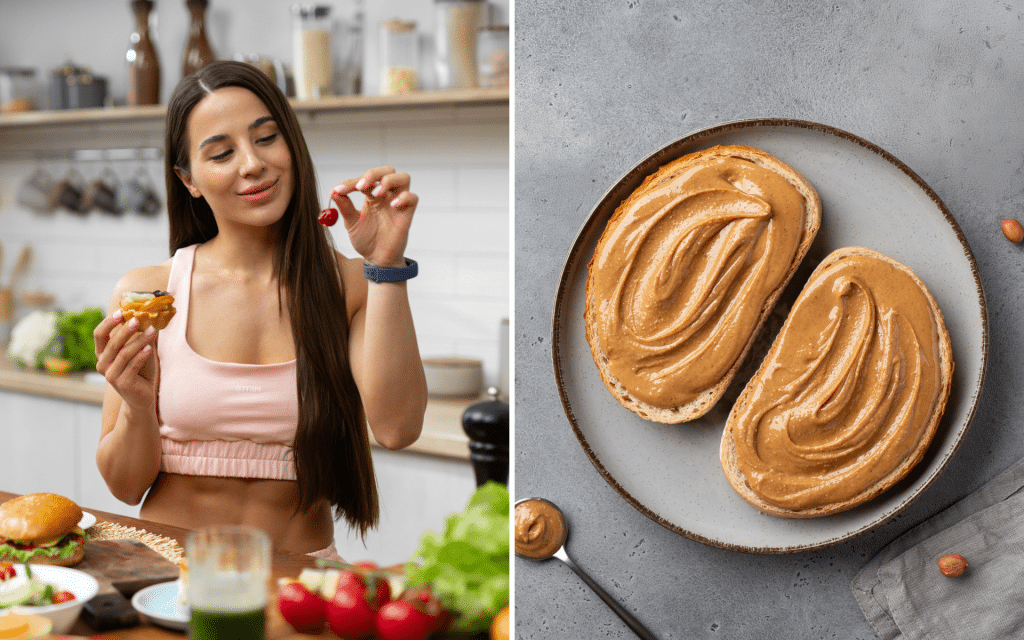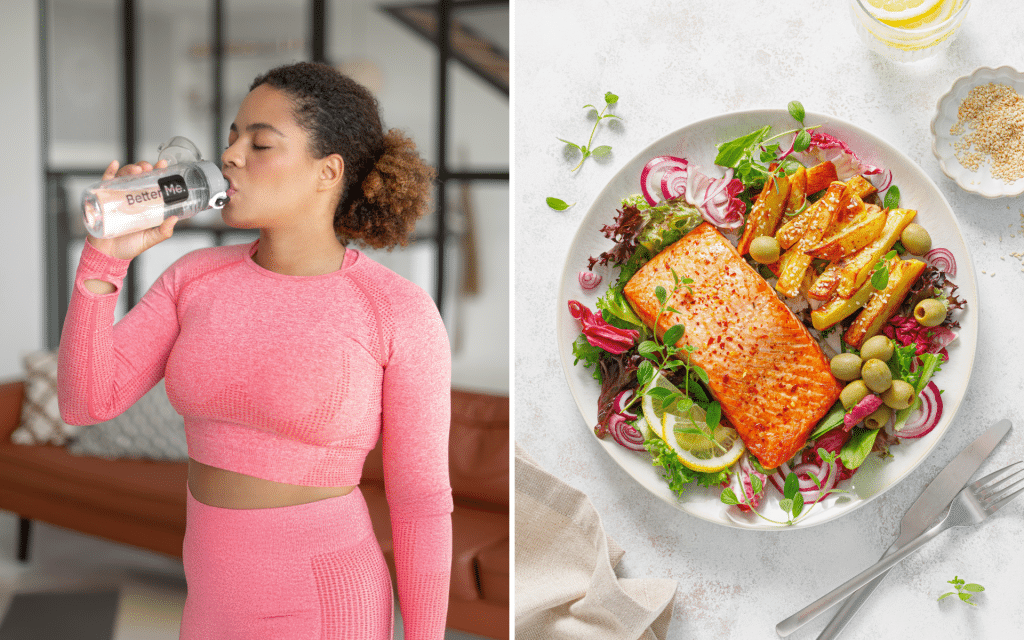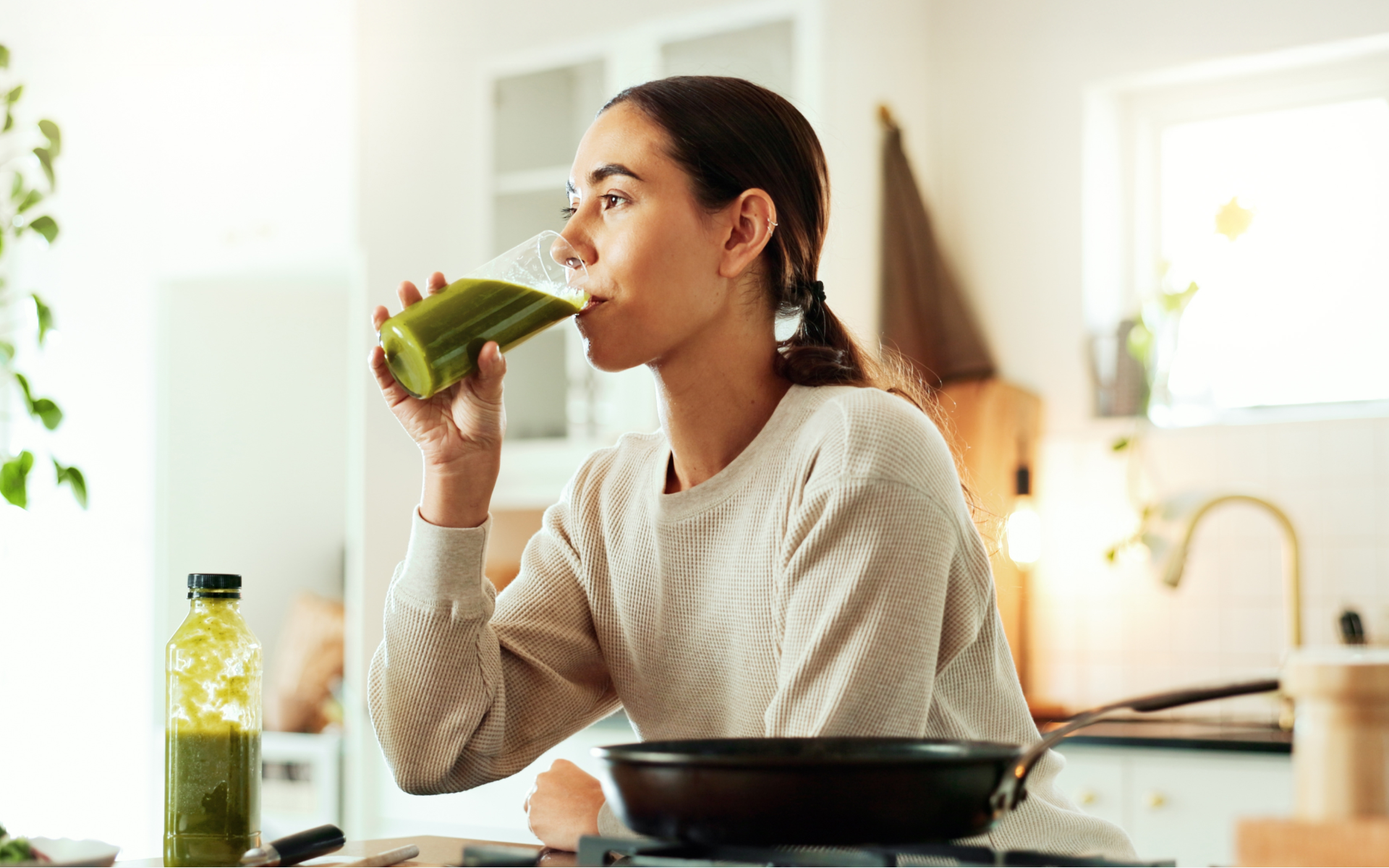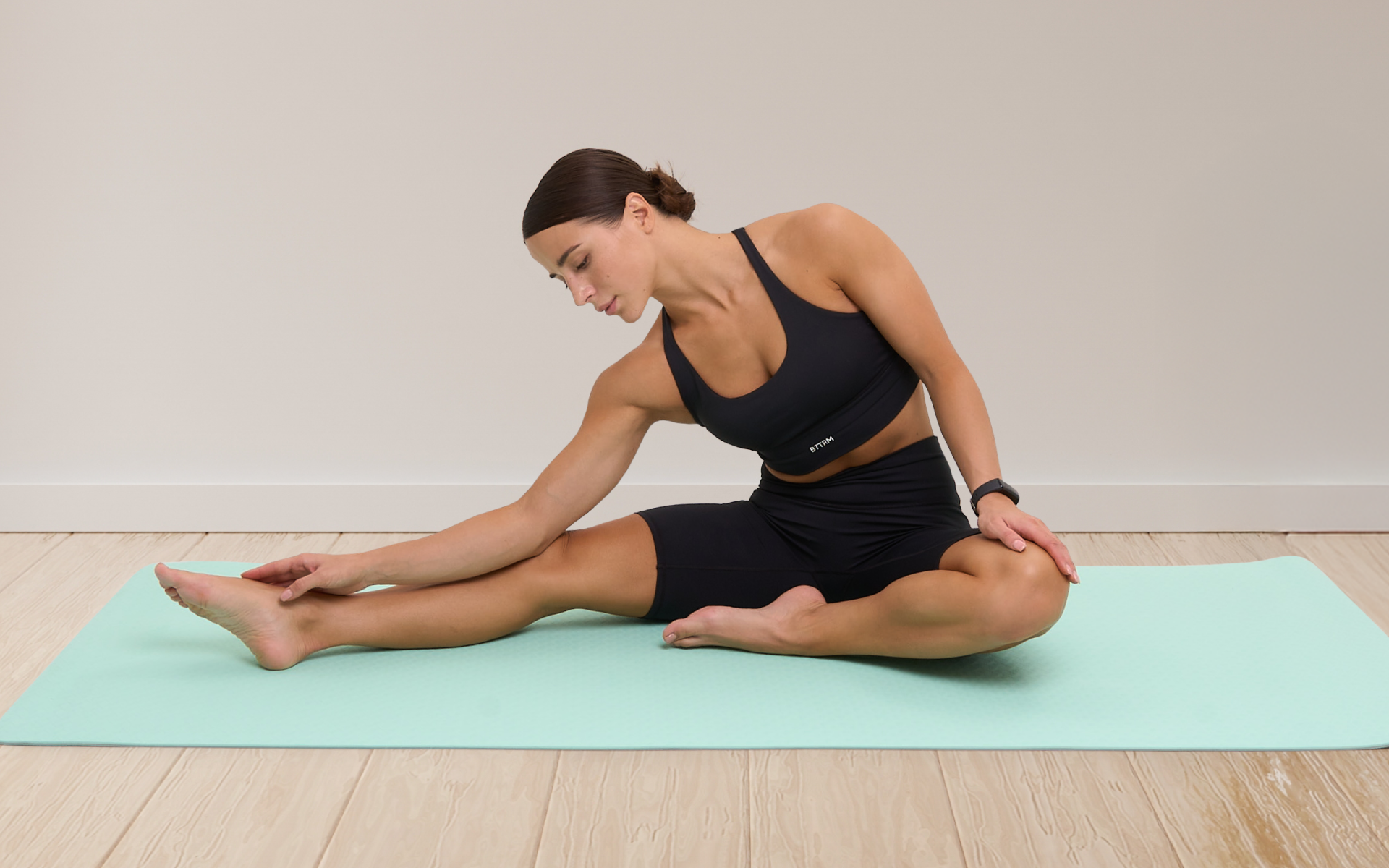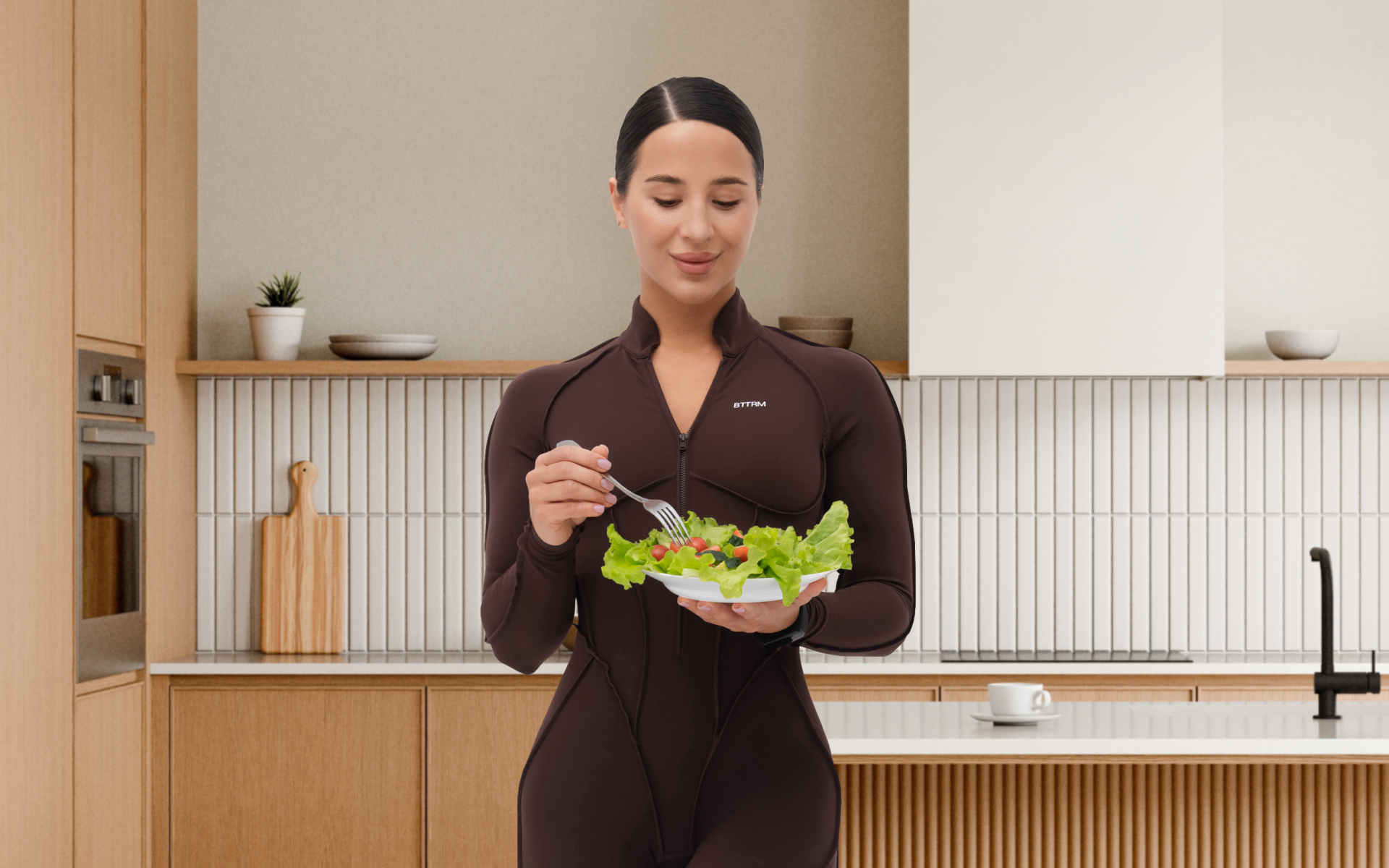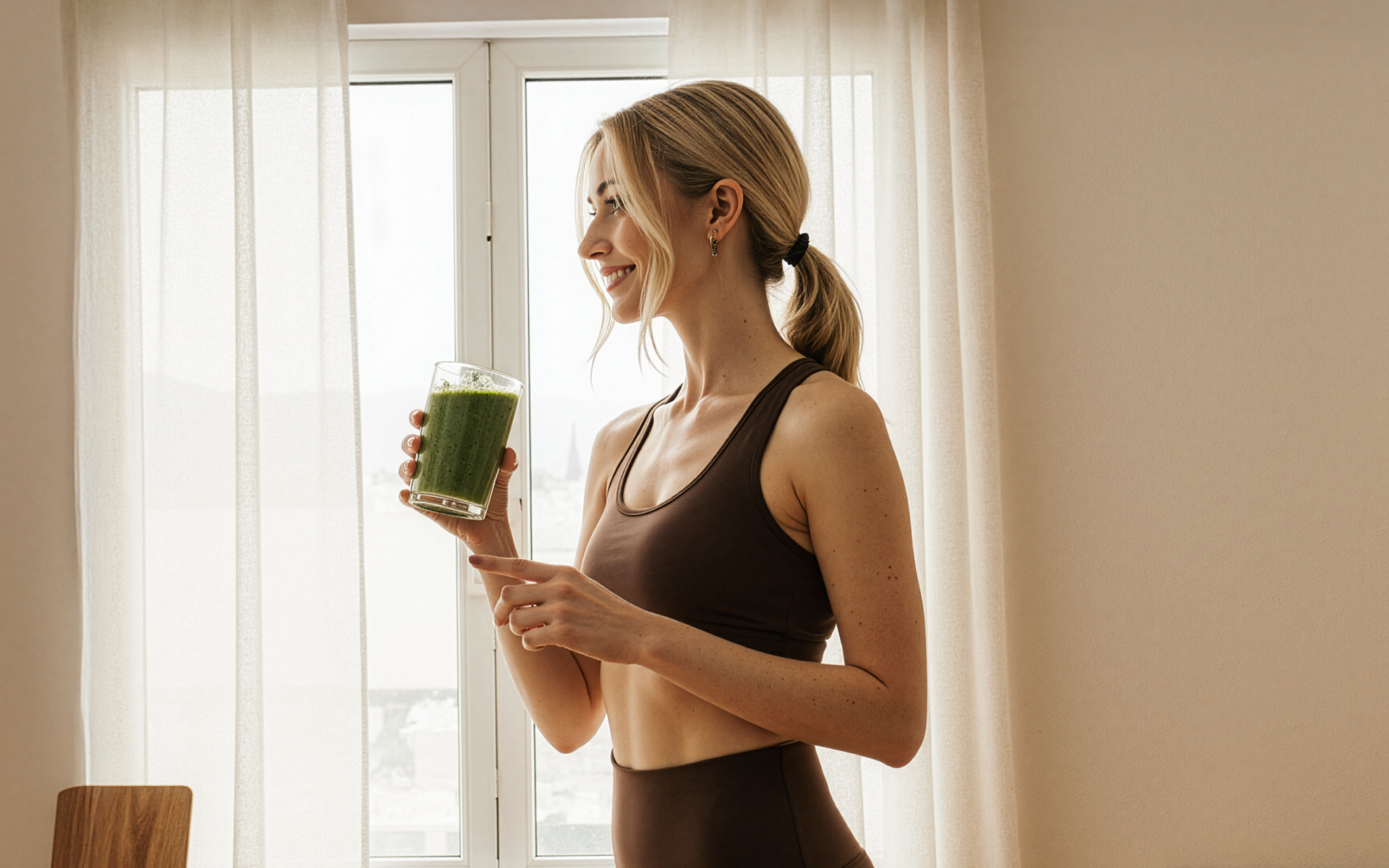The saying “you are what you eat” is true, especially regarding healthy weight maintenance.
It can be easy to turn to ultra-processed, high-calorie foods for convenience.
However, overdoing these foods can lead to weight gain and other health issues.
A clean eating challenge can reset your body and create healthier habits.
Clean eating is all about consuming whole, minimally processed foods close to their natural state.
Consuming primarily whole foods means avoiding highly processed foods that contain added sugars, unhealthy fats, and artificial ingredients.
Instead, incorporate nutrient-dense fruits, vegetables, whole grains, lean proteins, and healthy fats into your diet (1).
Here’s everything you need to know about how to do the clean eating challenge for weight loss:
What Is A Clean Eating Challenge For Weight Loss?
A clean eating challenge is a short-term commitment to consuming only whole, minimally processed foods for a set period.
This time frame can range from 7 to 30 days or even longer. The goal is to eliminate ultra-processed and unhealthy foods from your diet and focus on nourishing your body with natural, nutrient-rich foods.
A common misconception is that you’ll automatically lose weight by eating clean.
However, clean foods can pack calories if you consume them excessively.
So, a clean eating challenge designed for weight loss must also include portion control and caloric intake management.
A clean eating challenge for weight loss promotes a balanced and sustainable approach to nutrition. It’s not a crash diet or a quick fix, but rather a way to kickstart healthy habits and reset your body.
How Much Weight Can You Lose Eating Clean For A Month?
If you do it right, clean eating can help you lose 4-8 pounds monthly.
The Centers for Disease Control and Prevention recommend losing 1-2 pounds weekly for sustainable weight loss.
Remember that individual results may vary based on age, sex, body composition, and physical activity level.
How successful the clean eating challenge is for weight loss depends on:
- Your current weight, body composition, and metabolism
- The types of foods you’re consuming and their caloric value
- How much physical activity you’re getting during the challenge
- Your level of commitment to sticking to a clean eating diet throughout the challenge
- Whether or not you continue with healthy eating habits after completing the challenge
If you wish to free yourself from all the extra pounds that have been weighing you down for way too long, start using the BetterMe: Health Coaching app and overhaul your entire life!
The Types Of Foods You’re Consuming And Their Caloric Value
What you eat during a clean eating challenge plays a crucial role in its success for weight loss.
Clean eating emphasizes whole, minimally processed foods like:
- Fruits
- Vegetables
- Healthy fats
- Whole grains
- Lean proteins
These options tend to be nutrient-dense, meaning they provide essential vitamins and minerals while being lower in calories compared to more highly processed foods.
However, it’s important to remember that not all “clean” foods are low in calories.
Avocados, nuts, and olive oil are excellent sources of healthy fats but can also be high in calories.
Consuming these in large quantities can lead to an overall calorie surplus, which makes weight loss difficult.
Balance is key. To stay on track, focus on portion control and be mindful of your caloric intake, especially if weight loss is your goal.
Additionally, avoid assuming that just because something is labeled organic or natural, it’s automatically the best choice for weight loss. A clean eating challenge should revolve around smart food choices that align with your nutritional and caloric needs.
Read more: A Healthy Way to Losing 20 Pounds
How Much Physical Activity You’re Getting During The Challenge
A clean eating challenge works best with regular physical activity.
While clean eating focuses on what you put into your body, exercise determines how much energy you burn. The more active you are, the more calories you’ll burn, which can help create a caloric deficit—a necessary factor for weight loss.
Physical activity can also enhance your metabolism and improve muscle mass.
Even moderate-intensity activities like walking, yoga, or swimming can make a difference. Meanwhile, higher-intensity exercises like running, strength training, or HIIT workouts can boost fat burning and contribute to even more significant weight loss when paired with clean eating (2).
It’s also worth noting that exercise has benefits beyond weight loss:
- It improves mood
- Boosts energy levels
- Enhances overall health
These benefits make it easier to stay committed to your clean eating challenge.
Your Current Weight, Body Composition, And Metabolism
Your starting weight, body composition, and metabolic rate heavily influence how successful your clean eating challenge will be for weight loss.
Someone with a higher starting weight may see more significant initial weight loss than someone already closer to their ideal weight, as the body naturally burns more calories to sustain a more substantial mass (3).
Metabolism also plays a central role.
If you have a faster metabolism, your body will burn more calories at rest, making it easier to lose weight.
Conversely, a slower metabolism may require stricter caloric management to achieve similar results. Factors like age, genetics, and muscle mass play a role, as muscles burn more calories than fat even at rest (3).
Understanding these factors can help you set realistic expectations and design a healthy eating plan suited to your unique body.
Your Commitment To Sticking To A Clean Eating Diet Throughout The Challenge
Consistency is the backbone of a successful clean-eating challenge.
If you follow the program only loosely or allow frequent “cheat days,” your results may fall short of your expectations.
Sticking to a whole-foods-based diet requires discipline, planning, and often a shift in mindset, especially if you’re accustomed to eating a lot of ultra-processed or convenience foods.
Meal preparation and planning can help reduce temptations.
Having a set schedule for meals and clean eating snacks also prevents impulse eating and ensures you stay on track. Support systems, such as friends, family, or online communities, can play a significant role in helping you stay motivated during the challenge.
Your level of commitment also ties into the mental aspect of weight loss. By entirely investing in clean eating, you’re not just changing your diet—you’re reshaping your habits and beliefs about food. This mindset can be the difference between short-term effort and long-term health improvement.
Our No Processed Food Diet Menu blog teaches about whole, natural ingredients and balanced meals that support better health, improved energy levels, and various delicious options.
Whether Or Not You Continue With Healthy Eating Habits After Completing The Challenge
The success of a clean-eating challenge lies in the sustainable habits you cultivate, not just losing weight.
If you revert to old eating patterns once the challenge ends, you may regain your lost weight or even add more. Sustainable results come from adopting healthy eating as a lifestyle rather than a temporary fix.
To maintain progress, incorporate elements of clean eating into your daily routine beyond the challenge. For example, commit to eating more fruits and vegetables, limiting ultra-processed foods, or prioritizing balanced meals.
This lasting approach helps maintain weight loss and improves overall health in the long run.
The goal is not perfection but consistency. Even small, positive changes from the challenge can make a lasting impact. By continuing healthy habits, the clean eating challenge becomes the foundation for a sustainable, healthier way of life.
Can You Lose Weight Just By Clean Eating?
Clean eating can undoubtedly contribute to weight loss, but it’s not the only factor involved. It can also lead to a healthier diet, reducing calorie intake and improving nutrient quality.
However, weight loss also depends on other factors, such as:
- Caloric Deficit: To lose weight, you must consume fewer calories than you burn. Clean eating can help reduce calorie intake, but portion control and overall caloric balance are crucial (4).
- Physical Activity: Regular exercise can enhance weight loss by increasing the calories burned and improving metabolism (5).
- Lifestyle Factors: Stress management, sleep quality, and hydration also affect weight management (6).
- Individual Metabolism: Everyone’s metabolism is different, and factors like age, sex, and genetics can influence how easily you lose weight (3).
So, while clean eating can be a healthy approach to supporting weight loss, you should combine the diet with other lifestyle changes for the best results.
What Happens To Your Body When You Start Eating Clean?
When you start eating clean, your body may experience positive changes on multiple levels.
Here are some key benefits you may notice:
1. Improved Digestion
Clean eating involves incorporating more fiber-rich foods, such as fruits, vegetables, and whole grains, into your diet. Fiber supports healthy digestion by keeping your intestinal system moving smoothly and promoting a balanced gut microbiome (7).
By eliminating ultra-processed foods, which often contain difficult-to-digest additives and unhealthy fats, you can give your digestive system a much-needed break, reducing issues like bloating and discomfort.
2. Boosted Energy Levels
Ultra-processed foods high in sugar and refined carbohydrates can lead to energy spikes and crashes, especially in people with impaired glucose tolerance. Clean eating focuses on nutrient-dense foods that release energy more steadily.
Whole grains, lean proteins, and healthy fats fuel your body and stabilize your blood sugar, allowing you to experience sustained energy throughout the day (8). Think of it as giving your body high-quality fuel to run on.
3. Healthier Skin
Clean foods contain vitamins, minerals, and antioxidants that support skin health.
For example, vitamin C from fruits like oranges and berries is necessary for collagen production, while healthy fats from sources like avocado and nuts may help keep your skin hydrated (9).
Additionally, cutting out ultra-processed foods and excess sugar can lead to fewer breakouts and a clearer complexion, as researchers have linked these foods to skin inflammation (9).
4. Potential Weight Loss
Clean eating reduces calorie intake by eliminating empty-calorie foods, such as sugary snacks and fried items.
Because it prioritizes filling, nutrient-dense foods like vegetables, lean proteins, and whole grains, it may be easier to maintain a caloric deficit, which is key to weight loss. Plus, whole foods are more satisfying, potentially reducing overeating (10).
5. Improved Mood And Mental Clarity
The saying “you are what you eat” rings true here.
Foods rich in these nutrients directly affect brain health:
- Omega-3 fatty acids
- Antioxidants
- B vitamins
Clean eating provides abundant nutrients, supports brain function, and reduces inflammation, which can impact mood (11).
Many clean-eating practitioners report feeling:
- Less foggy
- More focused
- Even happier after adopting a clean diet.
Reducing added sugar and refined carbs can also stabilize your mood by preventing dramatic blood sugar fluctuations (11).
6. Reduced Risk Of Chronic Conditions
Clean eating often results in lower intake of added sugars, unhealthy fats, and other ingredients tied to chronic diseases like heart disease, type 2 diabetes, and certain cancers (12).
At the same time, increasing vegetables, fruits, and whole grains provide essential nutrients that strengthen the immune system and reduce inflammation, lowering the risk of illness (12).
7. Enhanced Hydration
Many clean eaters naturally drink more water, avoiding sugary sodas and energy drinks.
Staying hydrated contributes to:
- Healthy skin
- Better energy
- Improved digestion (13)
Fruits and vegetables with high water content, such as cucumbers and watermelon, can also help boost hydration levels.
How Do I Get Started On A Clean Eating Diet?
Figuring out how to eat clean for beginners may seem challenging at first, but following these steps can help:
- Understand clean eating principles by focusing on whole, minimally processed foods like vegetables, fruits, lean proteins, whole grains, and healthy fats while cutting down on ultra-processed items and added sugars.
- Decide on your calorie needs and aim for a moderate caloric deficit if weight loss is your goal. Use online calculators or consult a healthcare professional to determine your optimal daily calorie intake.
- Plan your weekly meals by creating balanced menus with proteins, healthy fats, and fiber-rich carbohydrates to simplify daily decisions.
- Shop the grocery store’s perimeter for fresh produce, proteins, and whole foods; avoid the ultra-processed and packaged foods in some of the interior aisles.
- Stock pantry staples like olive oil, spices, whole grains, canned beans, and raw nuts for quick, clean meal creation.
- Dedicate time to batch cooking and prepping meals to reduce daily effort while ensuring healthy options are available during the week.
- Overcome cravings with clean snacks, such as fruits, raw veggies with hummus, or a handful of nuts, and drink plenty of water to stay hydrated.
- You can navigate eating out by choosing fresh, customizable menu items or requesting modifications, such as salads or sauces on the side.
- Take a sustainable approach by allowing occasional treats, gradually replacing processed foods, and aiming for progress rather than perfection.
Taking these steps will help you master clean eating for beginners.
Sample 7 Day Clean Eating Meal Plan And Grocery List
Day 1
Breakfast: Scrambled eggs with spinach and cherry tomatoes, served with a slice of whole-grain toast
Snack: Apple slices with almond butter
Lunch: Grilled chicken salad with mixed greens, cucumber, carrots, and balsamic vinaigrette
Snack: A handful of trail mix (unsweetened dried fruit, raw nuts, and seeds)
Dinner: Baked salmon with roasted broccoli and quinoa
Day 2
Breakfast: Greek yogurt (unsweetened) topped with blueberries, chia seeds, and a drizzle of honey
Snack: Sliced cucumber and hummus
Lunch: A turkey and avocado wrap in a whole-grain tortilla with a side of baby carrots
Snack: A small handful of walnuts
Dinner: Grilled chicken stir-fry with bell peppers, snap peas, and brown rice
Day 3
Breakfast: Overnight oats with almond milk, banana slices, and a sprinkle of cinnamon
Snack: Hard-boiled egg and some grape tomatoes
Lunch: Lentil soup with a slice of whole-grain bread
Snack: A piece of dark chocolate (70% or higher) and some raw almonds
Dinner: Grilled shrimp skewers with zucchini and summer squash, served with a side of quinoa
Day 4
Breakfast: Smoothie made with spinach, frozen mango, almond milk, chia seeds, and a scoop of protein powder
Snack: Handful of snap peas and hummus
Lunch: Grilled chicken bowl with roasted sweet potatoes, steamed kale, and tahini dressing
Snack: Banana with a little almond butter spread
Dinner: Turkey-stuffed bell peppers with a side of roasted asparagus
When it comes to weight loss, progress is made by inches, not miles, so it’s much harder to track and a lot easier to give up. The BetterMe: Health Coaching app is your personal trainer, nutritionist, and support system all in one. Start using our app to stay on track and hold yourself accountable!
Day 5
Breakfast: Two-egg veggie omelet with mushrooms, spinach, and bell peppers, served with half an avocado
Snack: Mixed berries (blueberries, raspberries, strawberries)
Lunch: Grilled salmon on a bed of arugula with cherry tomatoes, cucumbers, and a lemon vinaigrette
Snack: Rice cakes topped with almond butter
Dinner: Grilled chicken breast with sautéed green beans and mashed sweet potato
Day 6
Breakfast: Whole-grain toast topped with mashed avocado, a poached egg, and chili flakes
Snack: Sliced bell pepper with guacamole
Lunch: Quinoa salad with roasted veggies (zucchini, eggplant, and peppers) and a drizzle of lemon-tahini dressing
Snack: A handful of roasted chickpeas
Dinner: Baked cod with steamed broccoli and a side of wild rice
Day 7
Breakfast: Smoothie bowl made with frozen mixed berries, banana, unsweetened almond milk, and topped with granola and coconut flakes
Snack: Carrot sticks with almond butter
Lunch: A chicken and avocado salad wrapped in a lettuce leaf, served with a side of cherry tomatoes
Snack: Hard-boiled eggs with a pinch of sea salt
Dinner: Herb-roasted chicken thighs with roasted Brussels sprouts and sweet potato wedges
Read more: Healthy Pescatarian Recipes to Make After a Busy Day
Organized Grocery List
Produce
- Carrots (5 large or 1 bag baby carrots)
- Cherry tomatoes (3 cups)
- Grape tomatoes (1 pint)
- Brussels sprouts (1 lb)
- Blueberries (1 cup)
- Carrot sticks (1 bag)
- Eggplant (1 medium)
- Mixed greens (1 bag)
- Mango (frozen, 1 cup)
- Mixed berries (4 cups)
- Zucchini (3 medium)
- Summer squash (2)
- Sweet potatoes (6)
- Snap peas (2 cups)
- Broccoli (2 heads)
- Mushrooms (1 cup)
- Spinach (6 cups)
- Bell peppers (5)
- Cucumbers (2)
- Arugula (2 cups)
- Kale (2 cups)
- Avocado (5)
- Bananas (5)
- Lemon (2)
Proteins
- Turkey breast (for wraps and stuffing, about 1 lb)
- Greek yogurt, unsweetened (large tub)
- Chicken breast (6-7 pieces)
- Chicken thighs (4-5 pieces)
- Shrimp (12-16 pieces)
- Protein powder (1 jar)
- Salmon fillets (2)
- Eggs (2 dozen)
- Cod fillets (2)
Grains/Legumes
- Lentils (dry or canned, 2-3 servings)
- Whole-grain tortilla wraps (1 pack)
- Whole-grain bread (1 loaf)
- Brown rice (1 lb dry)
- Wild rice (1 cup dry)
- Quinoa (1 lb dry)
Pantry Staples
- Tahini
- Olive oil
- Chia seeds
- Balsamic vinegar
- Almond butter (unsweetened)
- Unsweetened rice cakes
- Canned beans (chickpeas, 1 can)
- Dark chocolate (70% or higher, 1 bar)
- Trail mix (unsweetened, no added sugar)
- Raw nuts (almonds, walnuts, others of choice)
- Salt, pepper, chili flakes, cinnamon, and other favorite spices/herbs
Optional
- Hummus (1 tub)
- Guacamole (optional for snacks)
- Coconut flakes (for smoothie bowl topping)
- Granola (low-sugar; no added sweeteners)
Use this simple weight loss meal plan for overall health and reaching your body goals.
The plan provides balance, variety, and essential nutrients. Feel free to adjust based on personal preferences or dietary needs.
Weight loss results from clean eating can vary based on individual factors like metabolism, activity level, and caloric balance. Some people notice changes within a week or two, while others may take longer. Sustainable weight loss usually happens gradually over weeks or months. Yes, clean eating can support weight loss by reducing calorie intake from ultra-processed and high-sugar foods. By focusing on nutrient-dense, whole foods, you’re more likely to feel full and satisfied, promoting healthier calorie consumption. It depends on your goals. Clean eating alone can lead to weight loss if you’re creating a calorie deficit naturally. However, if weight loss stalls, counting calories alongside clean eating can help ensure you’re staying within your daily energy needs. Sweat itself doesn’t burn calories, but the activity causing you to sweat does. Sweating is your body’s way of cooling down during exercise or heat exposure. Calories are burned during physical activity, regardless of whether or not you sweat. Ten days of clean eating improves energy levels, reduces bloating, and stabilizes blood sugar levels. While it’s unlikely to result in dramatic weight loss, it sets the foundation for healthier habits and may lead to seeing initial changes in how you feel and look. A 28-day clean eating challenge focuses on eating whole, minimally processed foods for 4 weeks to build sustainable habits. The challenge often includes meal planning, avoiding ultra-processed foods, and managing portion sizes. Many participants experience weight loss, improved energy, and better overall well-being during this time.Frequently Asked Questions
How long after eating clean do you lose weight?
Is clean eating a good way to lose weight?
Should I count calories or just eat clean?
Does sweating burn calories?
What do 10 days of clean eating do?
What is a 28-day clean eating challenge for weight loss?
The Bottom Line
Starting a clean eating challenge may have numerous benefits for your body, mind, and overall health.
By focusing on whole, minimally processed foods and making other lifestyle changes like exercise and stress management, you can lose weight, improve digestion, boost energy levels, enhance skin health, reduce the risk of chronic diseases, and more.
Remember to approach clean eating as a long-term lifestyle change rather than a short-term diet for the best results.
DISCLAIMER:
This article is intended for general informational purposes only and does not serve to address individual circumstances. It is not a substitute for professional advice or help and should not be relied on for making any kind of decision-making. Any action taken as a direct or indirect result of the information in this article is entirely at your own risk and is your sole responsibility.
BetterMe, its content staff, and its medical advisors accept no responsibility for inaccuracies, errors, misstatements, inconsistencies, or omissions and specifically disclaim any liability, loss or risk, personal, professional or otherwise, which may be incurred as a consequence, directly or indirectly, of the use and/or application of any content.
You should always seek the advice of your physician or other qualified health provider with any questions you may have regarding a medical condition or your specific situation. Never disregard professional medical advice or delay seeking it because of BetterMe content. If you suspect or think you may have a medical emergency, call your doctor.
SOURCES:
- Nutrition and Healthy Eating (2020, odphp.health.gov)
- Benefits of exercise on metabolism: more profound than previously reported (2020, escardio.org)
- Metabolism and weight loss: How you burn calories (2022, mayoclinic.org)
- Calorie Deficit: What To Know (2022, clevelandclinic.org)
- Role of Physical Activity for Weight Loss and Weight Maintenance (2017, diabetesjournals.org)
- Association of Healthy Lifestyle Factors and Obesity-Related Diseases in Adults in the UK (2023, jamanetwork.com)
- Elucidating the role of diet in maintaining gut health to reduce the risk of obesity, cardiovascular and other age-related inflammatory diseases: recent challenges and future recommendations (2024, nih.gov)
- A Critical Review on the Role of Food and Nutrition in the Energy Balance (2020, mdpi.com)
- Skin health (2023, bda.uk.com)
- Optimal Diet Strategies for Weight Loss and Weight Loss Maintenance (2020, nih.gov)
- Keep Active & Eat Healthy to Improve Well-being & Feel Great (2018, niddk.nih.gov)
- Prevention of Chronic Disease by Means of Diet and Lifestyle Changes (2006, nih.gov)
- The Health Benefits of Water (n.d., maine.gov)

